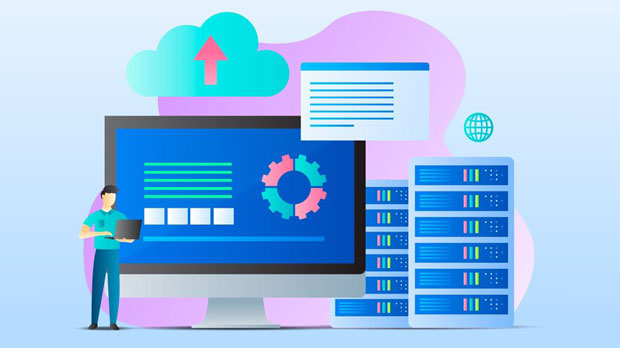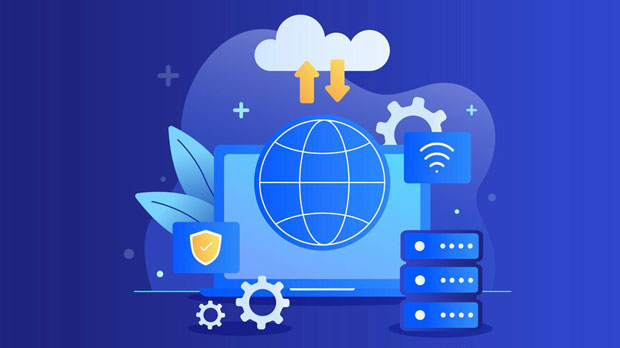In today’s highly interconnected world, enterprises face numerous challenges related to managing data traffic, improving privacy, and scaling their operations efficiently. One solution gaining traction is the use of PYPROXY unlimited proxy, a tool that enables businesses to improve their operational efficiency by enhancing security, expanding access to global markets, and reducing downtime. By offering an unlimited number of IP addresses, this tool allows companies to handle multiple requests seamlessly and bypass geographical restrictions, providing businesses with the ability to access real-time data, maintain operational continuity, and ensure secure communication channels. This article will explore the benefits of using PyProxy Unlimited Proxy and how businesses can integrate it into their operations to boost efficiency and productivity. 1. What is PyProxy Unlimited Proxy?Before diving into how businesses can leverage PyProxy Unlimited Proxy, it is important to understand what it is. PyProxy Unlimited Proxy is a powerful tool that provides enterprises with an unlimited number of proxy servers to route their internet traffic securely and efficiently. Proxies act as intermediaries between the user and the internet, masking the user’s IP address, encrypting data, and enabling anonymous web browsing. With PyProxy Unlimited Proxy, businesses can access multiple IP addresses, ensuring fast and secure internet connections, even when handling large amounts of traffic.2. Enhancing Data Security and PrivacyOne of the core advantages of using PyProxy Unlimited Proxy is the enhanced security it offers. In today’s business environment, data security is paramount. Cyberattacks, data breaches, and unauthorized access to sensitive information can significantly harm an organization’s reputation and financial standing. By utilizing proxy servers, businesses can protect themselves from such threats.Proxy servers allow enterprises to mask their internal IP addresses and encrypt communication, creating a barrier against potential cybercriminals. Furthermore, with an unlimited number of proxies available, businesses can easily rotate IPs, preventing malicious actors from tracking their activities. This layer of anonymity reduces the risk of attacks, ensuring that confidential data remains secure, whether it's customer information, financial records, or business strategies.3. Bypassing Geographical RestrictionsAnother significant advantage of using PyProxy Unlimited Proxy is its ability to bypass geographical restrictions. Many websites, services, and applications are restricted based on location, limiting access to crucial information or tools. For instance, businesses that operate internationally often encounter barriers when trying to access local market data or region-specific services. With PyProxy Unlimited Proxy, enterprises can easily circumvent these geographic restrictions by utilizing proxies from various countries. By assigning different IP addresses from different regions, businesses can simulate access from the desired locations, enabling them to collect valuable data and insights from global markets. This capability ensures businesses remain competitive and adaptable in an increasingly globalized economy.4. Managing Multiple Requests SimultaneouslyHandling a high volume of requests is a common challenge for many businesses, especially those that rely on real-time data, customer interactions, or digital marketing efforts. Whether it's scraping data from competitors’ websites, monitoring social media channels, or performing market research, businesses often need to manage multiple simultaneous connections without encountering performance issues.PyProxy Unlimited Proxy allows enterprises to handle a large number of concurrent requests without compromising speed or performance. The system automatically rotates IPs and distributes traffic across various proxy servers, ensuring that the load is evenly balanced. This capability not only speeds up data collection processes but also reduces the risk of server overloads or downtime, ensuring uninterrupted service for customers and partners.5. Reducing Downtime and Improving Operational ContinuityOperational continuity is crucial for businesses, especially in industries where downtime can lead to financial losses, disrupted services, and a damaged reputation. With PyProxy Unlimited Proxy, enterprises can maintain constant access to necessary resources and services without experiencing interruptions.By using an unlimited number of proxy servers, businesses can prevent bottlenecks caused by traffic congestion or network failure. In case one proxy server experiences issues or downtime, the system automatically redirects traffic to another server, ensuring that the business operations continue without disruption. This redundancy minimizes the risk of downtime and boosts overall operational efficiency.6. Improving Customer Experience with Faster ConnectionsFor businesses that rely heavily on online interactions, providing a seamless and fast customer experience is crucial. Slow-loading websites, laggy customer support services, or delayed responses can result in frustrated customers and loss of revenue. PyProxy Unlimited Proxy enhances the user experience by ensuring faster connections and reducing latency.By routing traffic through multiple proxy servers, businesses can access the fastest possible route, minimizing delays and reducing wait times. This is particularly useful for e-commerce platforms, online service providers, and businesses that offer cloud-based solutions. Faster connections contribute to improved customer satisfaction and help retain loyal clients, which is vital for long-term success.7. Facilitating Market Research and Competitive IntelligenceMarket research and competitive intelligence are essential for businesses to stay ahead in their respective industries. Traditional research methods, such as surveys or focus groups, often fail to capture real-time data or global trends. With PyProxy Unlimited Proxy, businesses can easily conduct web scraping, analyze competitor websites, and gather market intelligence from various sources without revealing their identity or location.This tool allows enterprises to scrape large volumes of data from various online sources, including competitor pricing, consumer sentiment, and industry trends. The ability to gather such information anonymously ensures that competitors are unaware of the research efforts, allowing businesses to stay ahead without alerting their rivals. Additionally, businesses can track changes in real-time, ensuring they can respond to market dynamics swiftly.8. Integrating PyProxy Unlimited Proxy into Business OperationsIntegrating PyProxy Unlimited Proxy into business operations requires a strategic approach to ensure maximum benefit. The first step is to identify the areas within the business where proxy servers can be most beneficial, such as in data security, market research, or customer service.Next, businesses should integrate the proxy tool into their existing infrastructure, ensuring compatibility with internal systems and software. This may involve configuring the proxy settings on web servers, cloud platforms, and customer service tools. It is also important to train employees on how to use the system effectively, including setting up and rotating proxies, analyzing data, and troubleshooting common issues.Finally, businesses should regularly monitor the performance of the PyProxy Unlimited Proxy system to identify potential issues and make adjustments as needed. By maintaining the system and optimizing its usage, enterprises can ensure that they continue to reap the benefits of enhanced operational efficiency.In conclusion, PyProxy Unlimited Proxy is an invaluable tool for businesses looking to improve their operational efficiency. From enhancing data security and privacy to bypassing geographical restrictions and handling multiple requests simultaneously, the benefits are clear. By incorporating this tool into their operations, businesses can streamline their processes, improve customer experiences, and gain a competitive edge in a fast-paced digital landscape. As enterprises continue to navigate the complexities of the modern business environment, tools like PyProxy Unlimited Proxy will play a crucial role in ensuring long-term success and growth.
Oct 27, 2025



































































